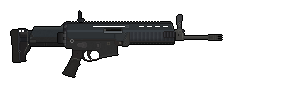Themiclesian Coast Guard
This article is incomplete because it is pending further input from participants, or it is a work-in-progress by one author. Please comment on this article's talk page to share your input, comments and questions. Note: To contribute to this article, you may need to seek help from the author(s) of this page. |
| Themiclesian Coast Guard | |
|---|---|
| Founded | 1921 |
| Service branches | Land Force Sea Force Flying Service |
| Leadership | |
| Home Secretary | Sle-da Ntrang (郈土萇) |
| Personnel | |
| Military age | 18 |
| Conscription | not in effect |
| Active personnel | 23,280 |
| Reserve personnel | 7,225 |
| Deployed personnel | 442 |
| Expenditure | |
| Budget | $3,610,200,000— |
| Percent of GDP | 0.17% |
The Themiclesian Coast Guard (Shinasthana: 中水兵, trung-sturt-prang; abbr. TCG) is the coast guard of Themiclesia. TCG was founded in 1921 by amalgamating prefectural maritime establishments, which ensured littoral safety, enforced law and order in coastal waters, rescued shipwrecks, and intercepted illicit traffic. The Coast Guard has access to the national merchant marine. It is normally under the authority of the Secretary of State for Home Affairs (吏曹), but it co-operates closely with the navy and shares some training schemes and other facilities. In case of naval war, the Coast Guard may be transferred by Order-in-Council to the Admiralty Board and support its security and combat demands.
Name
The phrase "Themiclesian Coast Guard" is the official translation of the Shinasthana term trjung-st′jur-prjang (中水兵), which roughly has the literal meaning of "central maritime force". The name stands in contrast with the prefectural marines, which were also "maritime forces" but named after their home prefectures, e.g. lêng-st′jur′-prjang (庭水兵). While the prefix trjung- is used for prefectural forces of the Inner Region, the latter is landlocked and does not field a fleet, so there is no confusion between central and prefectural forces in this instance.
History
The Themiclesian Coast Guard was formed through the amalgamation of provincial patrol and rescue vessels, lighthouses, coastal patrols and artillery, etc. in 1921. While piracy was not then a serious problem, the provinces wished to divest themselves of the funding and fielding of a fleet able to apprehend pirates and smugglers and the maintenance of coastal security. Additionally, it was a perennial dispute that the coastal provinces defrayed all costs of such a force, while inland provinces, though benefiting from good coastal order, did not contribute. As a result, the Liberals centralized a number of militia groups, coastal vessels, and related assets, creating the Coast Guard.
The coast guard operated a prison built for the short-lived Court for Marine Causes (海政廷), which sat in Ning and whose jurisdiction over naval offences in peacetime and the high crimes of piracy and trafficking of arms was divided from the Exchequer of Pleas in 1919 and thereunto merged in 1922. The prison remained separate even after the Exchequer regained jurisdiction over those crimes. Sailors and marines imprisoned by the Exchequer were committed to this prison since 1919, which was feared for its harshness against military prisoners.
The force was subject to the Special Conscription Act of 1934, due to Conservative hesitation over conscription, and six infantry regiments, accounting for seven-eighths of its strength, were raised from its ranks. Coast Guard units performed above expectations and gained a reputation for creativity and courage. Scholars attribute this to the fact that most Coast Guard officers were promoted for their talents from comparatively junior positions, while in other units a varying proportion of them would not have been able to be promoted without interviews, where prejudices, factionalism, and corruption were rife.
Jurisdictions
The Coast Guard is organized into eight Districts that correspond to littoral or insular areas. Each District is the responsibility of a Post and is served by a maritime and a terrestrial contingent; the former consists of vessels outfitted for various missions, and the latter a network of outposts and units attached to them. The Coast Guard Flying Service operates helicopters for both search and rescue and law-enforcement roles. Additionally, the Coast Guard operates the Rapid Response Force that consists of several tactical units given training similar to the Consolidated Army and Themiclesian Navy's special forces. In terms of rank structure, the Coast Guard has separate rankings for law-enforcement officers, sailing officers, and flying officers.
- Coast Guard Headquarters (中水兵署)
- Sngrak Post (朔官)
- Lêng Post (廷官)
- Spran Post (畔官)
- Inner Bay Post (內海官)
- Prjin Without Post (賓外官)
- Prjin Within Post (賓內官)
- Nem Post (南官)
- Insular Post (州官)
- Fleet Command (航官)
- Metropolitan Security Command (都次)
- Special Services Command (特正官)
- Airborne Division (气次)
- Maritime Division (水次)
- Internal Security Division (內案次)
- Public Order Division (禁暴次)
- Coast Guard Investigation Service (案次)
- Coast Guard Detention Service (中水兵考室次)
- 2 prisons
- 3 detention centres
- Coast Guard Support Command (中水兵禀次)
- Small Arms School (短兵學)
- Training and Recruitment Service (徵人脩人次)
Equipment
Multi-purpose logistics vessels
- s.R′em Class (參艇)
- Length: 130 m
- Breadth: 24 m
- Speed: 20 knots
- Max range: 8,000 nm
- Endurance: 30 days
- Engine: 2 x 4,000 kW diesel etc.
Helicopters
Firearms
Culture
Uniforms
The early Coast Guard consisted of policemen, militiamen, ex-soldiers, and sailors, who retained their respective sartorial habits. The police element inculcated that uniforms be properly worn, on the grounds that a respectably dressed man was more likely to be respected. As the Coast Guard regularly interacted with civilians, it was thought that their only set of uniforms needed to be both utilitarian and recognizable. To this end, badges were issued even though they were generally unfashionable in the forces, and other elements of their uniforms were designed to appear "respectable" and utilitarian at the same time. These notions are thought to be responsible for the Guard's unique uniform culture.
Ordinary headwear was a pith helmet with a large embossed anchor, with considerable padding on the interior. The outer layer consisted of a wool tunic and trousers. The former was drab green, fitted, and came to the thigh, with four pockets closed by buttoned flaps, and the latter was worn with a leather belt rather than suspenders, which had been typical up to that time. Wool socks were worn under ankle boots, and gaiters prevented some water or other substances from entering the boot. The tunic covered a reinforced shirt with a band collar, and a sleeveless shirt and drawers were worn over the body. A belt was worn over the tunic and around the waist; it was leather for officers and initially canvas for enlisted men. If a member of the Guard was required to carry a pistol, a Sam Browne belt was added to support it.
Some time in the 20s, gaiters were exchanged for taller boots, which were reportedly easier to don and doff. New boots incorporated reinforced steel toes and hobnails for improved utility; however, they were often given a strong polish for a dressier appearnce, which was necessary as the Guard had no separate dress uniform.
In 1934, around half of the Coast Guard was conscripted into the Consolidated Army to replenish its ranks. The Home Office modified the Guard's uniforms to meet desert fighting conditions. The tunic was not worn in summer months due to heat, exposing the shirt underneath. A canvas webbing was worn while in the desert. The pith helmet was changed for the Consolidated Army's helmet in 1937 in the interest of economy and camouflage. When a hot-weather uniform was issued for the Consolidated Army in 1941, it was also given to the Coast Guard's four line regiments.
After the Pan-Septentrion War, the Coast Guard was provided with a new dress uniform and a re-introduced pith helmet, with the iconic embossed anchor. The outer layer consisted of a tunic not dissimilar to the older one in use since 1918, but in blue wool and with brass buttons. Trousers were "cream" cotton in summer months and black wool with red galon during others. The trousers were initially issued with buttons for suspenders. While the colour of the summer trousers is actually white, it is called "cream" due to tailoring tradition. A white belt is worn over the tunic, canvas for enlisted men and leather for officers, with a gold buckle engraved with the Guard's emblem. Enlisted men wear trousers tucked into boots, a habit inherited from the war, while officers wore dress shoes. The Guard's boots are worn with a high shine and polished brass eyelets. A double-breasted overcoat is worn in winter months.
Official regulations issued by the Home Office in the 50s required a collar and black, formal necktie worn over the shirt in dress occasions, but as with most regiments with similar tunics, the collar and necktie is never worn in parctice. In part, the closed tunic rendered the tie invisible, unless also wearing a particularly tall collar. On the other hand, units like the Empress's Guards did regularly wear collars and neckties, and the top button was usually left undone to accommodate the tie. Coast Guard leaders believed that it created an overly "preppy" appearance not appropriate for the Guard. Suspenders were worn in the post-war years, but belts superseded them gradually.
Xenophobia
In the 1950s, the Coast Guard was accused by prominent individuals of practicing a xenophobic or nativist recruitment policy dating to the Pan-Septentrion War. Though evidence is found for discrimination against Dayashinese recruits, the same is generally not true for members of other diasporas in Themiclesia.
Fitness
The Coast Guard is noted in Themiclesia for its relatively strong emphasis on physical fitness. This is usually attributed to the policies of Lord Pjang (汸君), who was Home Secretary between 1920 and 1921. Pjang was troubled by several allegations of missed rescues early in his tenure due to hazardous weather conditions. He demanded that members of the Guard remain in good physical condition, as rescues may be required with little warning or assistance. Experts developed a training regimen that included sprinting, jogging, stretching, and lifting dumbells to maintain physical fitness, enforced in addition to normal exercises. Within the Themiclesian armed forces, this policy was unique and progressive, since most units had no fitness standards or only required recruits to prove them once; thereafter, fitness was only developed through drilling that mainly focused on combat scenarios. The emphasis on fitness also affected the Guard's rations, which were improved several times by better nutrients and variety.
During the Pan-Septentrion War, the Guard's reputation for fitness permeated throughout the forces and encouraged officers in other units to develop similar routines that suited their purposes. The Royal Signals Corps, which was then acknowledged as the most rigorously trained cavalry force in the land, adopted the Guard's fitness routines in abridged form; the Colonel-general reportedly was impressed with its thoroughness and reliability, recommending it in writing to all other regiments in 1933. In 1936, the Coast Guard's training department was heavily involved in designing the fitness component of a fast-paced training programme, which turned out conscripts to the front.
Guns
Due to procurement via the Home Office, the Coast Guard had a selection of weapons different from that of the rest of the armed forces in sensu stricto. After the Pan-Septentrion War, the Ministry of Defence worked to standardize weaponry across different regiments, and in recent decades small arms are quite consistent across all services. Thus, in shared training facilities, Coast Guard recruits requiring military training are often distinguished from others by the small arms to which they were introduced. In 2012, active units in the forces switched to the C76-2 rifle imported from Reberiya, while the Coast Guard received updated rifles in 2016 from the domestic arms manufacturer Epsilon Tech. It has become a notorious joke that the Government has cheaped out on the Coast Guard—their rifles were half as expensive as the Reberiyan import.



